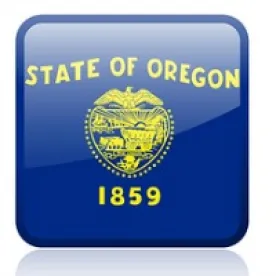As circumstances from the coronavirus (“COVID-19”) pandemic continue to evolve, the federal Occupational Safety and Health Administration (“OSHA”) has maintained reliance on Section 5(a)(1) of the Occupational Safety and Health Act (“OSH Act”), known as the General Duty Clause, and current standards to address workplace exposures to COVID-19.
Rather than engage in rulemaking, OSHA has continued to use guidance as its primary mechanism to communicate COVID-19 safety expectations to employers. In part a response to the perceived inadequacy in the current regulatory framework’s ability to address COVID-19 hazards, several states, such as Virginia and New Mexico, have already moved forward with temporary rulemaking for employer COVID-19 response measures.
Now, Oregon OSHA—who led the way in issuing industry specific COVID-19 response measures early in the pandemic and engaged in some emergency rulemaking initiatives—is the next state to move forward with plans to develop and implement a temporary standard for COVID-19. But unlike some of the other states that have focused rulemaking efforts on temporary response measures, Oregon OSHA is taking the additional proactive step of initiating rulemaking on a broader and permanent infectious disease control and prevention rule.
Oregon OSHA envisions the COVID-19 temporary rulemaking and permanent rule as two essentially different projects both in nature and scope.
Oregon COVID-19 Temporary Rulemaking
For the initial temporary rulemaking, Oregon OSHA intends to adopt an emergency rule that sets out requirements to protect against workplace exposures to COVID-19, with distinct but complimentary requirements for workplaces in the healthcare and general industries. In the near final draft COVID-19 Temporary Standard, released by Oregon OSHA on September 25, 2020, the agency identifies proposed COVID-19 requirements that will apply to all workplaces including:
- Strict physical distancing requirements, under which employers must ensure that 6 feet of distance is maintained between “all individuals in the workplace” by redesigning the workplace and establishing administrative controls.
- Required use of masks, face shields, and face coverings by all individuals in the workplace, with limited exceptions (g., children under the age of 5, while eating or drinking).
- Enhanced sanitation measures, such that all common areas accessible to employees and high-touch surfaces are targeted to be cleaned and sanitized every 24 hours.
- Increased communication on COVID-19 safety protocols through required postings, employee communications, and training.
- COVID-19 incident response measures, including contact tracing procedures, notification processes to affected employees, medical removal of employees for quarantine and isolation when necessary, COVID-19 testing in certain circumstances, and protocols for coordinating with the Oregon Health Authority or local public health department when necessary.
Separately, Oregon OSHA’s draft COVID-19 Temporary Standard, if adopted as is, would require employers to conduct an exposure risk assessment as prescribed in the rule and designate at least one individual per establishment to act as a “distancing officer,” who will be responsible for implementing the employer’s COVID-19 safety protocols and procedures.
Following Oregon OSHA’s release of this draft, the agency’s rulemaking documents indicate that a further revised draft and complete set of appendices will be released for final review towards the end of October 2020. Oregon OSHA also plans to adopt the temporary rule with immediate effect by the end of October or early November 2020.
Oregon Permanent Rule on Airborne Infectious Disease in the Workplace
Once Oregon OSHA has finalized its COVID-19 Temporary Standard, the agency will focus its attention on a permanent Airborne Infectious Disease Rule, which will be have broader infectious disease control and prevention requirements. Throughout October and November 2020, Oregon OSHA plans to meet with rulemaking advisory committees to develop and produce a pre-proposal draft of the permanent rule.
Oregon OSHA expects to release the pre-proposal draft in late November 2020. The permanent rule will be subject to a formal notice and comment period beginning in November 2020 and extending through March 2021.
Key Take Away for Oregon Employers
If Oregon OSHA’s timeline proceeds as is, the agency will have a COVID-19 Temporary Standard in place by the end of this month and a permanent Airborne Infectious Disease Rule in place sometime in 2021, with Oregon OSHA’s current timeline identifying a potential effective date in April 2021.
Both the temporary and permanent rulemaking initiatives present significant implications for Oregon employers, with new administrative requirements, compliance obligations, and considerations for workplace design and operations. Employers in Oregon should therefore keep a close eye on these rulemaking activities and consider participating in stakeholder meetings and by public comment.




 />i
/>i

